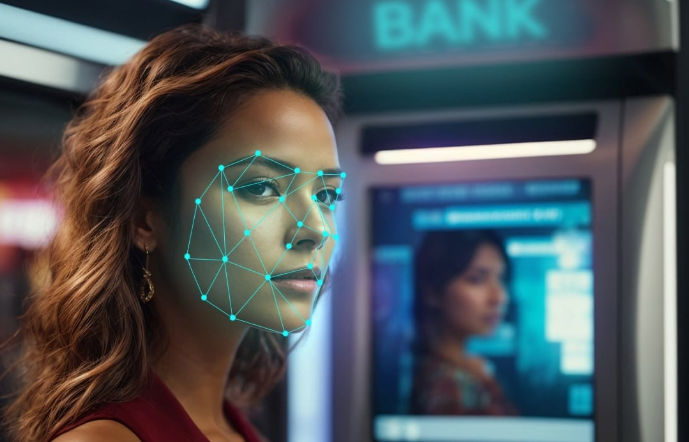
When Willie Sutton famously quipped he robbed banks “because that’s where the money is,” he summed up a mindset that still drives criminals today—only now, they’re targeting ATMs with escalating intensity and sophistication. Explosive attacks, ram raids, jackpotting, skimming, and shimming have multiplied at alarming rates, creating a high-stakes cat-and-mouse game between institutions and fraudsters. The $1 billion annual loss attributed to ATM fraud demands a fundamental shift in how we think about ATM security. The question isn’t if we can protect our machines from these assaults; it’s whether we’re ready to adopt and evolve the right technologies to stay a step ahead.
The Rise of Biometrics in ATM Security: Can It Live Up to the Hype?
Biometrics is a promising frontier that has gained significant traction in recent years. Think about it: facial recognition, palm vein patterns, iris scanning, and fingerprint ID offer levels of security PINs and cards can’t compete with. It’s more than just advanced tech; biometrics taps into something personal and uniquely human, creating a new layer of security that, ideally, can’t be duplicated.
But for biometrics to be widely embraced at ATMs, it needs to move beyond novelty to reliability. Today’s biometrics implementations are not created equal. From facial recognition struggles in low-light scenarios to lagging fingerprint sensors, biometric systems need to meet higher standards of consistency, speed, and ease of use. Moreover, interoperability and standardization are critical to achieve any real scalability. We need a global standard, something akin to EMV for chip cards, to ensure that biometric systems function reliably across platforms and borders.
Smart Solution: Imagine biometrics enhanced by deep learning algorithms that adapt to varying environments, ages, and even physical changes. Such adaptive learning systems could make biometrics both more secure and convenient for users. As AI-driven technologies advance, biometric solutions will become increasingly intuitive, forming a seamless, secure interface between consumers and machines.
Addressing Privacy and Security Concerns
With great tech comes great responsibility. The appeal of biometrics is undeniable, but we’re looking at significant challenges around data privacy. Storing, accessing, and transmitting biometric data involves massive data sets that, if breached, could lead to serious identity theft. And unlike a password or a PIN, we can’t simply “reset” our fingerprints or irises.
A clever approach here would be self-sovereign biometric data storage, where users’ biometric data is stored on their devices (or even a secure blockchain) rather than in centralized databases. This approach reduces the risk of mass data breaches, putting control back in the hands of individuals and institutions alike.
The Role of Automation in Strengthening ATM Security
While biometrics tackles user authentication, automation addresses the critical need for rapid response and continuous adaptation in security protocols. The sheer volume and variety of threats against ATMs call for a more proactive approach. Financial institutions need to employ testing and validation frameworks that are automated, reducing dependency on manual checks that are time-consuming and prone to human error.
Virtualized, automated testing not only speeds up deployment but also allows testing under real-world conditions without physical risk. Through APIs, banks can simulate attacks, assess vulnerabilities, and verify system responses, all while keeping ATMs operational and secure.
Forward-Thinking Advice: Automation isn’t just about efficiency; it’s about agility. As fraudsters continue to evolve their tactics, automated testing environments could implement “adaptive testing.” This would involve AI systems that anticipate potential vulnerabilities and initiate tests accordingly, allowing security measures to evolve in sync with fraud strategies. Imagine a system that “learns” from new fraud patterns globally, evolving and fortifying ATM defenses in real time.
Quantum Computing: A Double-Edged Sword in ATM Security
Quantum computing is on the horizon, and it holds both promise and peril for ATM security. On one hand, quantum algorithms could transform encryption, making ATMs far less vulnerable to hacks. On the other, quantum’s immense computational power could theoretically break traditional encryption, posing a new level of threat.
To prepare, financial institutions should begin exploring post-quantum cryptography—encryption methods designed to withstand quantum attacks. Being early adopters of these advanced security protocols could be the edge needed to stay ahead of future threats.
Building a Collaborative Security Ecosystem
The truth is, no one bank or financial institution can tackle ATM fraud alone. Criminals operate in sophisticated networks, sharing data and techniques globally. To effectively counter these threats, we need a collaborative approach. Banks, security providers, and regulatory bodies need to work together, sharing insights, threats, and defense tactics in a real-time fraud intelligence consortium.
A consortium could serve as an “early warning system” for fraud trends, enabling quick adaptation across the industry. Additionally, shared resources—such as collective automated testing frameworks and biometric standards—could help streamline the implementation of advanced security technologies, bringing costs down and speeding up deployment times.
The Future of ATM Security: Embracing a Proactive, Integrated Defense System
The next generation of ATM security won’t rely on any single technology but rather a layered, integrated approach. Imagine an ATM system where biometrics handles identity verification, quantum-resistant encryption secures transactions, and automation swiftly validates security integrity—all while collaborating with an industry-wide fraud intelligence network.
We’re not there yet, but the tools are within reach, and the demand has never been more urgent. In an era where financial services are becoming increasingly digital, we can’t afford to be passive. ATM fraud is a solvable problem, but it demands a shift in how we think about, approach, and ultimately secure these machines.
As financial institutions, it’s time to be relentless, adaptive, and forward-thinking. This is more than just a fight against fraud; it’s a quest to build trust and resilience into the very fabric of our financial systems. The future of ATM security is smart, it’s strategic, and it’s within our grasp—if we’re bold enough to seize it.




